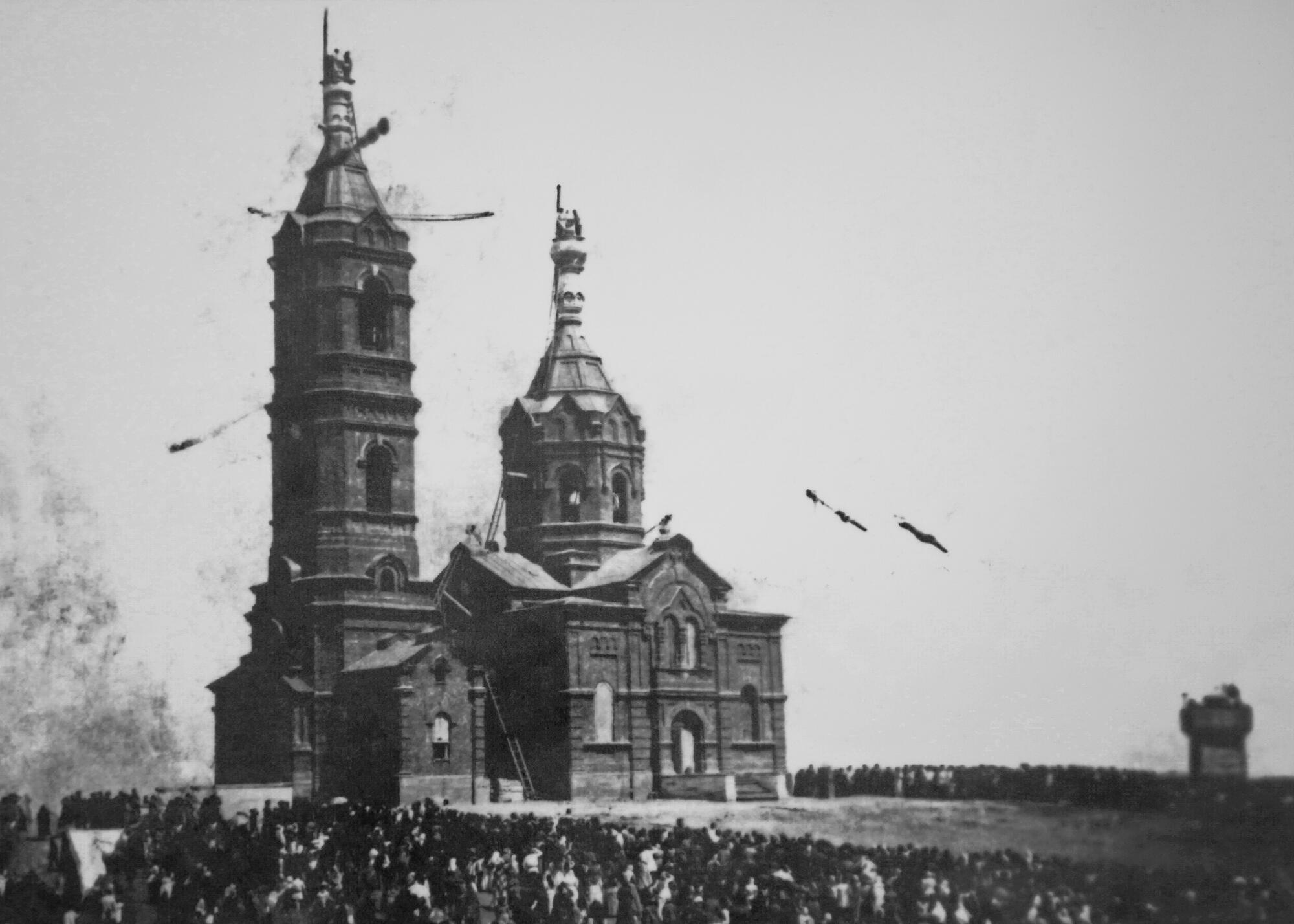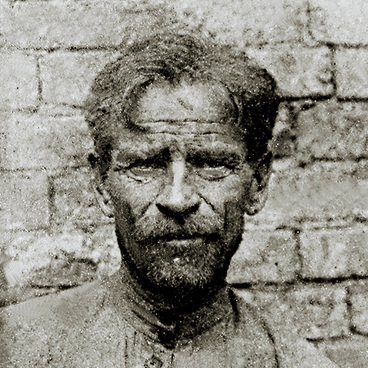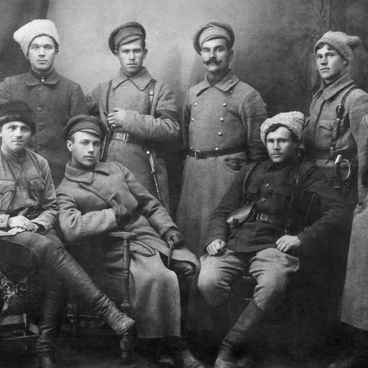Construction on the Nikolskaya Church on Mount Preobrazhenskaya, which was often called Nagorny, started in 1894, after a large fire on 27 July 1888 had destroyed the half-stone Preobrazhenskaya church, which had stood in the same place. The church was designed by Saint Petersburg architect, Mikhail Arefievich Schurupov. As the ‘Orenburg Chronicle’ wrote on 10 July 1894, ‘The new church… should serve the city’s residents as a monument in honor of the visit paid by his Imperial Highness, Sovereign Tsaverich Nicholas Aleksandrovich, in whose name the church is dedicated, to Nicholas the Miracle Worker. On 29 June 1903, the church, funded by voluntary donations, was consecrated. It did not have its own parish. Rather, it was seen as a part of a school, as students from a girl’s secondary school, the Orsk Higher Primary schools and the Aleksandrovskaya school all went there.
Freedom of conscience was declared in the Soviet Republic. This rule was written into the RSFSR’s constitution in 1918 and 1925. However, freedom of conscience in the USSR was dealt with unilaterally - only as a freedom to spread anti-religious propaganda. The state openly supported and financed anti-religious propaganda.
In 1930, local authorities across the country launched the closure of Orsk’s churches. Public meetings were called. Then, based on the proceedings of thirteen organized sector meetings and six unorganized sector meetings, according to which all organized sectors and most of the unorganized sectors voted for the handing over of church buildings for the cultural needs of the people, the Presidium of the Orsk City Council voted on 22 January 1930 to withdraw the Spaso-Preobrazhenskiy cathedral from the religious population and give it to labor unions, whist the Mikhail-Archangel church would be turned into a theatre. It was decided to leave the Nagorny Church for believers. The result of the decision was that in 1931 the Spaso-Preobrazhenskiy Cathedral and the Mikhail-Archangel church closed, with their possessions being withdrawn. The following year, 1932 saw the city’s last remaining church, the Nagorny church, being closed. For a while, the church was used as a workers’ supply department for the “Neftesoyuzstroi” enterprise. On 15 June 1934, a note was issued by the head of the Orsk City Committee with a demand to vacate the former church “in order to dismantle the building”. The Spaso-Preobrazhenskiy cathedral and Mikhail-Archangel church had also been dismantled brick by brick a little earlier.
The 1934 photograph captures the moment that the dismantling of the Nagorny church began, which took place in front of a large crowd.
Only the bell tower survived. It was used for a long time as a flag alarm for the fire brigade. The bell tower stood alone on Mount Preobrazhenskaya for almost half a century as an unofficial symbol of the city. The tower has the nickname “Bashnya” amongst the local population.
Freedom of conscience was declared in the Soviet Republic. This rule was written into the RSFSR’s constitution in 1918 and 1925. However, freedom of conscience in the USSR was dealt with unilaterally - only as a freedom to spread anti-religious propaganda. The state openly supported and financed anti-religious propaganda.
In 1930, local authorities across the country launched the closure of Orsk’s churches. Public meetings were called. Then, based on the proceedings of thirteen organized sector meetings and six unorganized sector meetings, according to which all organized sectors and most of the unorganized sectors voted for the handing over of church buildings for the cultural needs of the people, the Presidium of the Orsk City Council voted on 22 January 1930 to withdraw the Spaso-Preobrazhenskiy cathedral from the religious population and give it to labor unions, whist the Mikhail-Archangel church would be turned into a theatre. It was decided to leave the Nagorny Church for believers. The result of the decision was that in 1931 the Spaso-Preobrazhenskiy Cathedral and the Mikhail-Archangel church closed, with their possessions being withdrawn. The following year, 1932 saw the city’s last remaining church, the Nagorny church, being closed. For a while, the church was used as a workers’ supply department for the “Neftesoyuzstroi” enterprise. On 15 June 1934, a note was issued by the head of the Orsk City Committee with a demand to vacate the former church “in order to dismantle the building”. The Spaso-Preobrazhenskiy cathedral and Mikhail-Archangel church had also been dismantled brick by brick a little earlier.
The 1934 photograph captures the moment that the dismantling of the Nagorny church began, which took place in front of a large crowd.
Only the bell tower survived. It was used for a long time as a flag alarm for the fire brigade. The bell tower stood alone on Mount Preobrazhenskaya for almost half a century as an unofficial symbol of the city. The tower has the nickname “Bashnya” amongst the local population.



